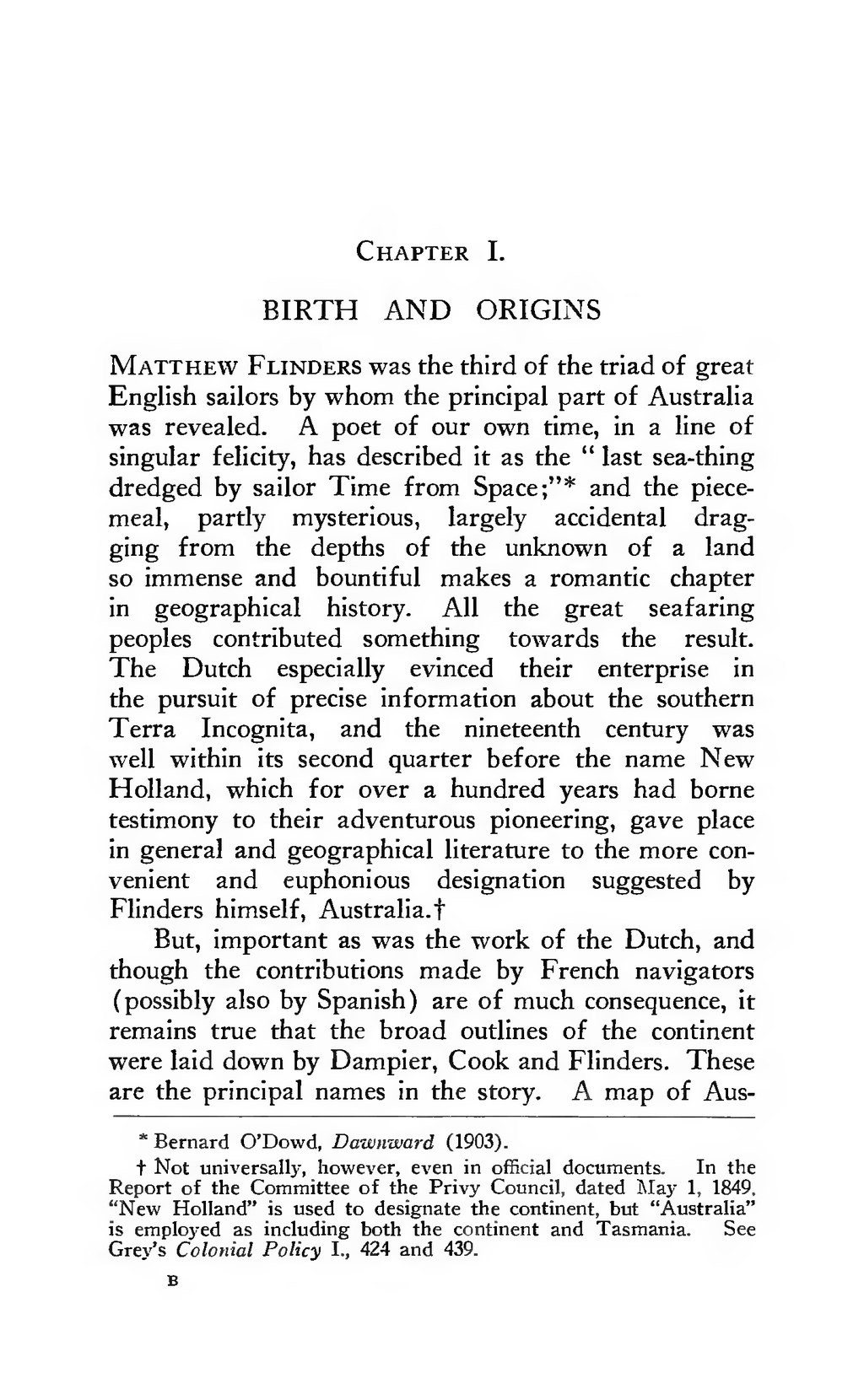Chapter I.
BIRTH AND ORIGINS
Matthew Flinders was the third of the triad of great English sailors by whom the principal part of Australia was revealed. A poet of our own time, in a line of singular felicity, has described it as the "last sea-thing dredged by sailor Time from Space;"[1] and the piecemeal, partly mysterious, largely accidental dragging from the depths of the unknown of a land so immense and bountiful makes a romantic chapter in geographical history. All the great seafaring peoples contributed something towards the result. The Dutch especially evinced their enterprise in the pursuit of precise information about the southern Terra Incognita, and the nineteenth century was well within its second quarter before the name New Holland, which for over a hundred years had borne testimony to their adventurous pioneering, gave place in general and geographical literature to the more convenient and euphonious designation suggested by Flinders himself, Australia.[2]
But, important as was the work of the Dutch, and though the contributions made by French navigators (possibly also by Spanish) are of much consequence, it remains true that the broad outlines of the continent were laid down by Dampier, Cook and Flinders. These are the principal names in the story. A map of Aus-
- ↑ Bernard O'Dowd, Dawnward, (1903).
- ↑ Not universally, however, even in official documents. In the Report of the Committee of the Privy Council, dated May 1, 1849, "New Holland" is used to designate the continent, but "Australia" is employed as including both the continent and Tasmania. See Grey's Colonial Policy I., 424 and 439.)
